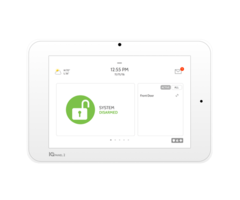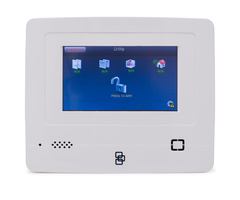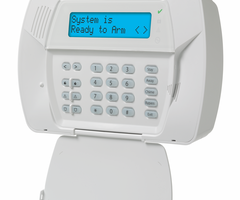What Does a Burglar Alarm Do?
A burglar alarm tells the system to send outbound alerts that let others know about a potential intrusion, and it tells the system to activate any programmed sirens and strobes that let on-site occupants know about the alarm. A burglar alarm activates when a security sensor is faulted.
There are four main types of alarms that are associated with alarm systems. These are burglar alarms, life-safety alarms, environmental alarms and medical alarms. Burglary alarms, which are also called security alarms, indicate that there is some type of security breach in the building. Life-safety alarms indicate that there is some life-threatening situation in the building, such as a fire or an outbreak of carbon monoxide gas. An environmental alarm refers to a serious environmental condition in the building, such as a flood or a dangerously low temperature. A medical alarm indicates that someone has suffered from a medical emergency. While these alarms all have different applications, they are all used to alert others to some type of emergency.
A burglar alarm is the most common type of alarm event associated with a security system. A person will often install an alarm system for the sole purpose of protecting their property against a robbery or a home invasion. The purpose of a burglar alarm is to let the end user and/or a central monitoring station know that someone has entered or attempted to enter the property. If the system is set up with a central monitoring station, then the user can receive automatic dispatch during a burglar alarm. But if a user has a self-monitoring plan, then they will receive a text and/or email alert when a burglar alarm occurs. It will then be up to them to contact the authorities.
A burglar alarm will occur when a security sensor has been activated. This could include a door and window contact, a motion sensor or a glass break detector. In most cases, a burglar alarm will only occur if the alarm system is armed. However, there are programming settings to have security zones trigger a burglar alarm even when the system is disarmed. But most users will only have security zones set to trigger a burglar alarm if a sensor is activated while the system is in the armed state. By comparison, this is usually not the case for the other types of alarms, such as life safety devices, which will typically trigger alarms even when the system is disarmed.
Another thing about burglar alarms is that they can be programmed to trigger a siren, or they can act as "silent" alarms. A siren can be beneficial, as it can potentially scare off an intruder who may try to cause damage inside the property. But on the other hand, a silent alarm can be good for catching a criminal in the act. Whether or not a security zone will activate a siren is determined by its programming settings.
However, a silent burglar alarm should not be confused with a duress. A duress is when a user disarms their alarm system using their duress code. A duress code is a special code that is designed to be used in emergency situations, such as a hostage situation. The duress code disarms the system, but it also sends out an alert to a central station, telling the operator to send help immediately. No alarm will occur on the system, and no siren will be activated. But the user will still receive immediate dispatch to potentially save their life. Entering a duress code can be crucial for tricking a criminal into thinking that the system has been disarmed, while still receiving the help that is needed. But remember, this code should only be used in a true emergency. Many alarm companies will also have customers set up a verbal duress code so that they can secretly request help while they are on the phone to verify an alarm event.
Did you find this answer useful?
We offer alarm monitoring as low as $10 / month
Click Here to Learn MoreRelated Products






Related Categories
- Home Security Systems
- Business Security Systems
- Apartment Security Systems
- Burglar Alarm Systems
- Small Business Security Systems
- Monitored Home Security Systems
- DIY Wireless Security Systems
- DIY Wired Security Systems
- Answered
